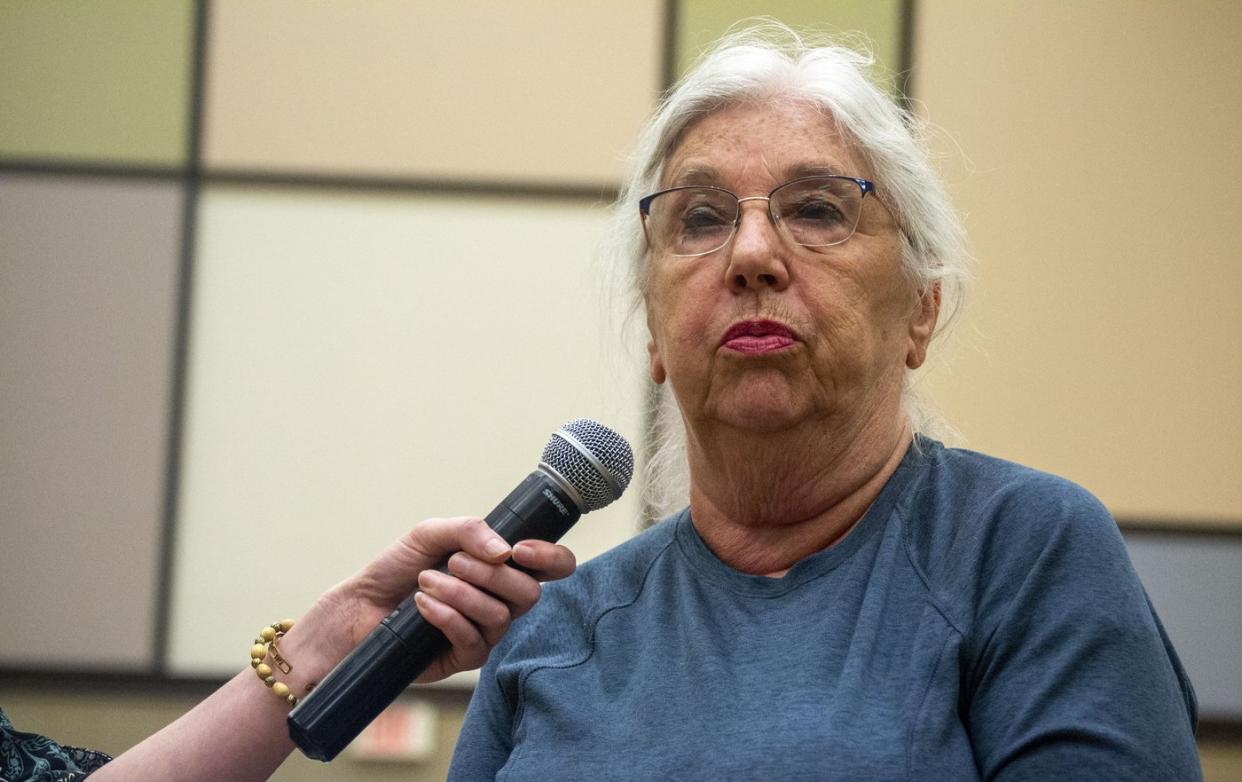Code Grey: Lack of urgent care options in NOTL a big concern, residents say

“Code Grey” is one in a series of stories in The Lake Report about health care in Niagara Region. In hospital parlance, “Code Grey” means loss of essential service.
Niagara Health is undoubtedly going through major changes with the introduction of a three-site hospital system across its St. Catharines, Welland and South Niagara locations.
But for Niagara-on-the-Lake, a community with 30.9 per cent of the population comprised of seniors and no urgent care centre, residents are worried these changes aren’t enough.
After a presentation at the NOTL Community Centre on Monday night, Niagara Health CEO Lynn Guerriero and executive vice-president of clinical operations Heather Paterson took questions from the audience.
An overarching concern for residents was the distance between NOTL and the nearest hospital that would be able to provide certain types of specialized care.
Lord Mayor Gary Zalepa wanted to know just how long it would take for an ambulance to transport someone from NOTL to the nearest site.
“The drive time from Niagara-on-the-Lake to St. Catharines takes 29 minutes," Guerriero responded.
"It'll be about 28 minutes to the new site because it’s all highway and to the current Niagara Falls site, it’s 26.7,” she said, adding that these times were calculated with regular drivers in mind, not an ambulance.
Paterson noted that all emergency calls would be triaged to assess the priority of each situation.
Aside from emergencies, NOTLers have a hard time arranging certain screenings for non-emergency ailments.
Resident Heidi Brown shared her concerns about accessibility to these services in town during the Q & A session.
“Right now, if I need a mammogram, I have to go to the hospital to get one. Any other imaging as well. It’s not done in the community of Niagara-on-the-Lake,” she said.
Guerriero pointed out that there are a number of community-based diagnostic facilities across Ontario, as a result of physicians pushing for them.
“We have been pushing, you do not believe how hard, that one of these comes to Niagara,” she said.
Until then, there aren’t many options for seniors in NOTL who don't have a car or someone to drive them to appointments.
The Lake Report asked if any patient transport was available in these situations and the answer was no.
Paterson said that there is no current service and patients must rely on family, friends or Uber.
“I think that is something we’ve talked to the region about around transportation and helping communities come together,” she said.
“It’s a concern for us as well. We want people to have access to care.”
Coun. Sandra O’Connor was concerned about how aging NOTLers with complex health issues will be taken care of.
Paterson said the South Niagara site, under construction now at Montrose and Biggar roads in Niagara Falls, is specifically designed for geriatric populations.
She called it “a centre of excellence for wellness and aging.”
Following the responses and words from Guerriero, O’Connor urged Niagara Health to recognize NOTL’s need for more immediate care in town.
“Niagara–on-the-Lake in the next 25 years is almost going to double in population,” she said.
“We’re looking at possibly trying to advocate for an urgent care centre to meet this almost doubling of the population.”
Guerriero agreed with O’Connor, adding, “We need to really make sure we’re advocating for expansion of those types of services in high-growth areas.”
After the Q & A session, O’Connor told The Lake Report she felt the presenters were putting a positive spin on everything.
“We’re left with gaps,” she said.
In the U.K., smaller cottage hospitals have been shutting down and health care has been centralized, she noted.
“They found out it doesn’t work and they are now going back,” she said.
O’Connor said she wonders if Niagara Health has studied what other countries have done.
Ultimately, she said she wished more information had been addressed during the presentation, including how many beds are needed for a population of mostly seniors and how that changes the standard metric.
Julia Sacco, Local Journalism Initiative Reporter, The Lake Report


